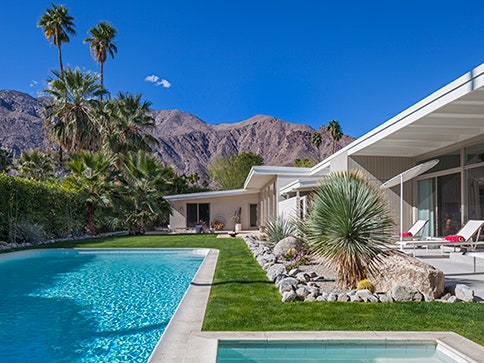If you happen to love trees (many people do) and hate bigotry (most do), this was a tough one:
In Palm Springs, Cal. (shown here), there was a spirited debate about removing trees that formed a racial border. That’s the focus of “Racist Trees,” a compelling documentary that reaches most PBS stations at 10 p.m. MondayJan. 22), under the “Independent Lens” banner.
Even that title has split people. Fox News mocked the notion: Can trees really be racist?
No, but they can be a racial barrier. Many things can. In Michigan, a river separates Benton Harbor (89 percent Black) from St. Joseph (88 percent White). In Florida, a highway separates the impoverished Liberty City area from the wealthier sections in other parts of Miami. Throughout the nation, studies have shown, highways shattered Black communities.
And in Palm Springs, it’s trees. The typical house on one side, we’re told, sells for more than triple the typical one on the other.
None of this is a stereotypical battle with unbudging conservatives. Palm Springs, despite its wealth, voted for Joe Biden in 2020. One council member cheerfully points out that this may be the most gay city council in the U.S.; after facing anti-gay bias throughout their lives, council members are appalled by the notion they are anti-Black.
But they are inheriting a city’s brutal past. Covenants – in writing or merely understood – kept Palm Springs all-white, the film says. Blacks found job, but nowhere to live. Many rented shacks in an area run by the Cahuilla tribe … until the cowboy-hat-wearing mayor had those buildings torn down and burned.
One solution came from Lawrence Crossley, a Black entrepreneur. A former New Orleans jazz trumpeter, he was the chauffeur for a Palm Springs mogul. He soon had his own successful ventures, from a water company to a mobile-home park. He then developed what was then an all-Black neighborhood, filled with the sort of mid-price ranch homes that propelled 1950s America.
That was next to an all-white golf course. Photos show that the course then had trees on all four sides, stopping stray golf balls. They were removed from three sides, but remained on the Crossley side, separating the golfers from their Black neighbors.
These are not the sort of trees people hug. They are tamaracks, seen more often in Canadian bogs than in warm parts of the U.S. They shed needles, requiring clean-ups by homeowners. (Palm Springs reportedly leads the nation in swimming-pools-per-capita, the film says, but at least one Black owner gave up on his pool after fighting off the needles.) They can reach 60 feet and beyond; many Crossley neighbors were unable to see not just the golf course, but also the mountains.
This story is told fairly – and rather jauntily – by “Racist Trees.” It offers hints that the leader of the cut-the-trees movement (ironically, a white guy in a Black neighborhood) is sometimes abrupt and abrasive. It also shows the city officials being quite pleasant.
All of which merely adds to the complexity. Racist trees? It’s an intriguing subject.

Racist trees? That stirs an intriguing film
If you happen to love trees (many people do) and hate bigotry (most do), this was a tough one:
In Palm Springs, Cal. (shown here), there was a spirited debate about removing trees that formed a racial border. That’s the focus of “Racist Trees,” a compelling documentary that reaches most PBS stations at 10 p.m. Monday, under the “Independent Lens” banner.
Even that title has split people. Fox News mocked the notion: Can trees really be racist?
No, but they can be a racial barrier. Many things can. In Michigan, a river separates Benton Harbor (89 percent Black) from St. Joseph (88 percent White). In Florida, a highway separates the impoverished Liberty City area from the wealthier sections in other parts of Miami. Throughout the nation, studies have shown, highways shattered Black communities. Read more…